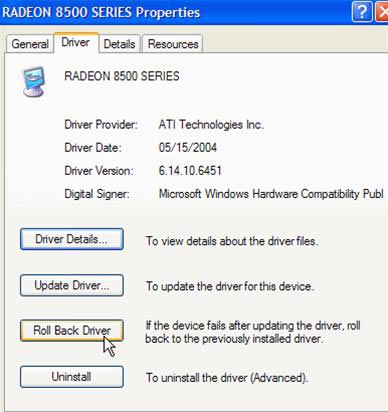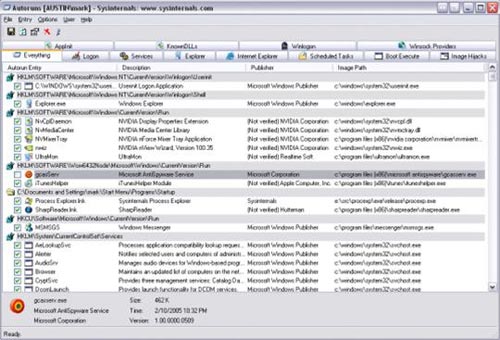Part II: Troubleshooting
Part I: Causes the "Blue Screen" problem in Windows
In this section, we will carry out common error handling steps for the case to fix the error.
When you encounter a BSOD error (Blue screen of dead), you first need to consider which error group it belongs to in the previous section, but by default Windows will automatically restart the system. system when an error occurs.
Therefore, we need to change this setting in Windows XP by: right-clicking My Computer - Properties , selecting the " Advanced " tab and under the " Startup and Recovery " section, clicking the " Settings " button. A new window will appear and under the " System Failure " section, uncheck " Automatically restart ".
After performing the above operation, we can restart Windows manually to see if the BSOD error has been fixed. If it has been processed, you continue to use it unless the number of times has been repeated many times in a short period of time, then refer to the cases and ways of handling below.
Note that BSOD errors have many reasons, so we need to consider quite a lot of cases that lead to a system failure that has its own solution.
In case Windows still fails to restart as usual or BSOD still appears , when in the boot screen (POST - memory test phase), press F8 repeatedly. The Windows startup option will appear with many options. Next, select Safe Mode for Windows to boot in Safe mode. Safe mode will download Windows XP with the most restrictive level of drivers and software that starts automatically with Windows. By testing this, we will filter out the error from the application software and the driver.

The System restore utility in Windows is necessary when you need to restore the system before it fails.
* How to handle : Run anti-virus and spyware programs like Ad-Aware, Spybot Search & Destroy . if after scanning it detects viruses, spyware infecting the system, eliminating them and then restarting system.
If the above method still does not work, we restart the system in Safe mode. This next step will use the system restore function with "System restore". Go to Start - Programs - Accessories - System tools - System restore .
The "System restore" utility backups hard disk space and creates a restore point every time you install or remove software. If you feel the error stems from installing or removing a software at a specific time, you can restore the system back to that point with "System restore".
However, it should be noted that software or settings from that point on are also lost, new registry values will also be deleted after restoration. In addition, users may not need to use "System restore" if after you install a driver or software that leads to a system failure, please stop their operation and remove it. system.
* Handling with drivers : With hardware device drivers, you can roll-back them back to the previous driver version or lock them. Right-click My Computer , select Properties and go to Hardware tab and select Device Manager . In this section, we can check their operation status (Video card drivers are in " Display Adapters ", the sound card in " Sound card and game controllers " and of the motherboard are " IDE / ATAPI controllers " ). Select the device you want to check, right-click and click " Properties ", go to the " Drivers " tab.
In the " Driver " tab, you can use the " Roll back " option to undo the driver version of the previous version or " Uninstall " to completely remove the driver. One note is that you should not " Uninstall " Driver sound cards , video cards or motherboards because they will affect the Windows startup. Instead, you should "roll back" first.

Device driver roll back.
The second option we can do is to disable the driver by right-clicking on the device in the " Device Manager " section and selecting " Disable " to prevent Windows XP from loading device drivers at startup. Also, do not lock the sound card driver, video card and motherboard.
If this process is successful, you should update the device's new driver from the manufacturer's CD or website to avoid errors.
* Processing with software : For software that is faulty, incompatible and they automatically start when Windows starts, resulting in a system failure, there are 2 ways to handle it.
The quick and convenient way is to use Sysinternal's free AutoRuns utility (acquired by Microsoft). AutoRuns will display all software (including Windows files) that are automatically downloaded at startup. By unchecking to prevent the software or service from being uploaded. However, you should also note that Windows services and system files, such as userini.exe, explorer.exe, cannot be locked.

AutoRuns interface.
The more manual way is to go to Start - Run , type " msconfig " and select the " Startup " tab in the " System Configuration Utility " window. As above, you uncheck the programs that risk harming the system.
Part III: Troubleshooting hardware
ONLINE
You should read it
- Guide to backup and restore device drivers in Windows
- How to back up and restore drivers in Windows 10, backup and restore drivers in Windows 10
- Steps to Backup and Restore Windows 10 Driver with 1 command line in cmd
- The best driver update software for computers
- Driver Driver installation software for computers
- How to root out old Windows 10 drivers?
 Why the computer is slow?
Why the computer is slow? Print better from the web
Print better from the web Vista helps Office 2007 work better
Vista helps Office 2007 work better New technology speeds up data through optical fiber
New technology speeds up data through optical fiber Learn about Web applications
Learn about Web applications 'Measure' server - Costly but worthwhile
'Measure' server - Costly but worthwhile